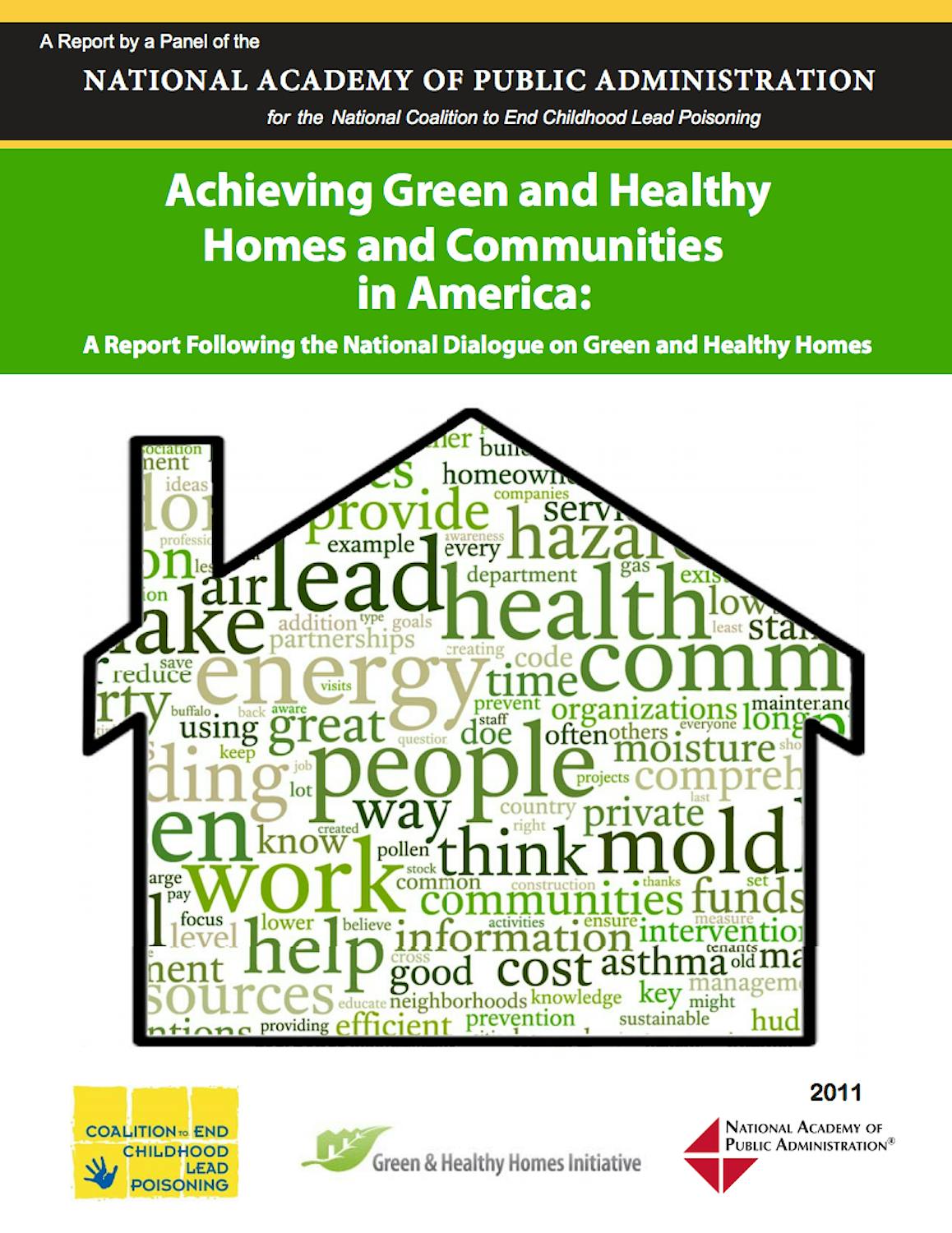
Achieving Green and Healthy Homes and Communities in America
In the Fall of 2010, the National Coalition to End Childhood Lead Poisoning contracted with the Academy to develop and execute an online dialogue that would examine ways to increase the health, safety, and energy efficiency of low- to moderate-income homes.
Click the button below to view the View Study Report.
View ReportClick the button below to view the View Study Report.
View ReportKey Findings
In the Fall of 2010, the National Coalition to End Childhood Lead Poisoning contracted with the National Academy to develop and execute an online dialogue that would examine ways to increase the health, safety, and energy efficiency of low- to moderate-income homes. Since 1999, the National Coalition had worked to improve low- to moderate-income housing through the support and execution of home interventions that addressed multiple issues within a home at one time; an approach that often did not align with other traditional, single-issue housing assistance programs. By 2010, the National Coalition had taken on the leadership of the Green and Healthy Homes Initiative, a public-private partnership focused on integrating funding streams to improve low- to middle-income homes across the country. With plans to expand the GHHI's operations, the National Coalition partnered with the National Academy to conduct the National Dialogue on Green and Healthy Homes, a collaborative online dialogue in which participants were asked to identify challenges to, and innovative practices for, improving the health, safety and energy-efficiency of low- to moderate- income homes. The Dialogue was live from November 4-November 22, 2010, and collected 100 hundred ideas and 362 comments from 320 registered users. Over the course of its two and a half week duration, the Dialogue received more than 2,500 visits from over 1,100 people in 48 states and territories.
Recommendations
By reviewing the feedback received in the Dialogue, the Panel was able to make a number of recommendations on how the green and healthy homes community of practice could increase the health, safety and energy efficiency of homes across the country. These recommendations included: Conduct an evaluation of current housing standards to determine if they meet the Nation’s health, safety, and energy efficiency needs; Develop a tiered performance standard for healthy, safe and energy efficient homes; Group government funding streams to better align programs with the comprehensive intervention approach; Develop a long-term funding strategy to support efforts after Recovery Act funding ends; and Educate government decision makers and the public on the importance of developing green and healthy homes and communities, and the work that supports that development.
